Genius resolute offensive strategy
Field Marshal Pyotr Alexandrovich Rumyantsev entered the military history as an outstanding commander of the second half of the XVIII century. Brilliant victories of PA Rumyantsev over strong opponents have earned him deserved world fame, and also demonstrated the invincible power of the Russian regular army. Broad support in the country received his progressive reform of military affairs. “Rumyantsev is remarkable for that,” writes his biographer, “that when he was called to combat activities in the highest spheres, he was the first to show his creativity in all the main departments of military art both in theaters of operations (theater) and in battlefields and in simple, visual example has influenced the development of domestic military affairs. His combat activity was a school for all others ... ".
Rumyantsev became the first, after Svyatoslav, a Russian commander, whose troops not only managed to gain a foothold on the banks of the Danube, but also crossed it. Merit Rumyantsev in the success achieved was marked by awarding him in 1775, the honorary title - Transdanubia.
P.A. Rumyantsev boldly rejected the canons of maneuverability and cordon strategy that dominated the world at that time. He advocated the most decisive ways of waging war: not to avoid, but to seek battle for the purpose of defeating the enemy's army; not to scatter, but to concentrate their forces on the theater of military operations and in battle to strike; whenever possible act offensively. These rules P.A. Rumyantsev steadily followed throughout his leadership activities, although the situation in which he had to command the troops was far from favorable to him. He developed the glorious centuries-old tradition of Russian military art - to start a decisive battle with active defensive actions, and then go on the offensive, as its outstanding predecessors did: Alexander Nevsky in the Battle of the Ice (1242), Dmitry Donskoy in the Kulikovo Battle (1380) .), Peter I in the Battle of Poltava (1709), Saltykov in the battles of Palzig and Kunersdorf (1759). Having met with the enemy, Rumyantsev tried to immediately attack him, while strictly complying with the situation.
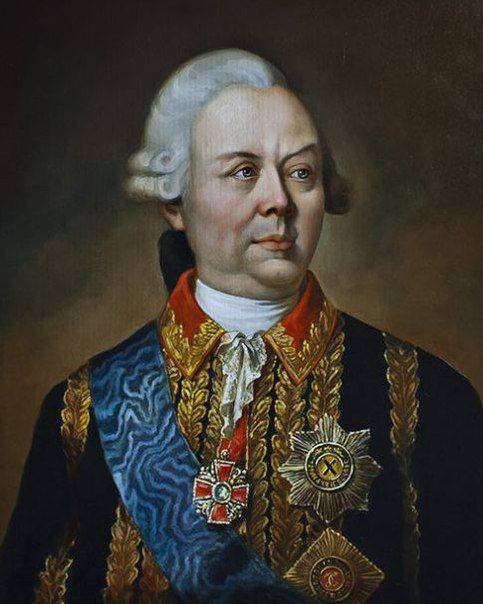
From the first steps of the military activity of the commander, as noted in D.F. Maslovsky, "the active beginnings of Russian strategy and tactics are developing seriously." The strategy of a decisive offensive was manifested in the actions of Rumyantsev already in the battle of Gross-Egersdorf (1757), from which he began his victorious journey in the Seven Years War 1756-1763. As the commander of the infantry brigade, in reserve, P.A. Rumyantsev at the critical moment of the battle, on his own initiative, launched an attack on the flank of the Prussian troops and with an irrepressible bayonet attack forced them to flee.
Subsequent events of the Seven Years War invariably confirmed the high effectiveness of Rumyantsev’s actions, who, thanks to his military abilities and talent, became one of the most honored Russian officers, especially after successfully conducting independent operations to capture Kohlberg. Having repeatedly been convinced of combat experience in the undoubted advantage of offensive strategy and tactics, he argued: "My opinion has always been and will be that the attacker always thinks to win, and the defender always leaves within himself a fear commensurate with his desire."
Rumyantsev’s offensive strategy was most clearly manifested in the 1770 summer campaign of the 1768-1774 Russian-Turkish war. 1-I army, under the command of PA. Rumyantsev, had a secondary task - to cover the siege of Bender fortress from the Danube. However, she performed this “passive” role by a decisive offensive against the main forces of the Grand Vizier. Capturing his subordinates with his bold strategic plans, Rumyantsev at the military council appealed to them to attack the enemy.
Within one month, the army of PA Rumyantsev as a part of 38000 soldiers and 149 guns attacked Turkish forces three times: on June 17 at the Ryaboy Grave, on the Larga River and on the July 7 on the Kagul River. Although it yielded to the enemy twice in the first two battles, and in the last in four, the main Turkish army, numbering 21 thousand, as well as the army of the Crimean Tatars, who were about 150 thousand, supported by 80 guns, was crushed. Contrary to the plans of St. Petersburg, the 180 Army alone carried the brunt of the armed struggle on land in the 1 campaign of the year, and with its victories it changed the strategic situation in this theater of war. With the defeat of the main army of the enemy fell, and all his fortresses on the north bank of the Danube. The idea of Rumyantsev, which was based on a decisive offensive between the Prut and Seret Rivers, was successfully implemented.
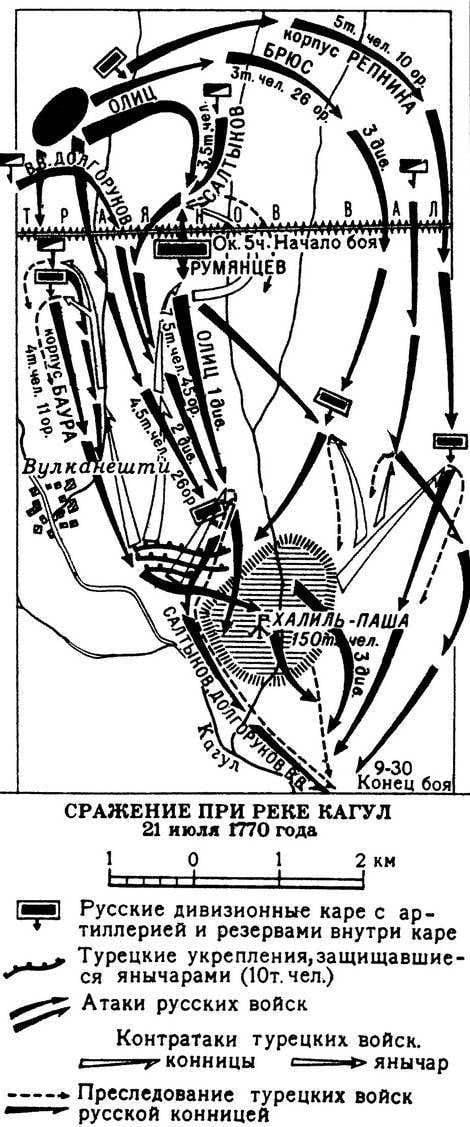
An outstanding Russian commander saw in offensive actions the main way to defeat the enemy, even with temporary setbacks and forced retreat, when the situation in the theater was unfavorable. He expressed the idea of such a forgotten form of strategic offensive at that time, as a counter-offensive. In actions “against the great number ...” the commander wrote, “you can sometimes let the enemy in order to then expel him, and with great harm to him ...”. This method of action was brilliantly applied to defeating the enemy by one of the most talented students of Rumyantsev - M.I. Kutuzov during World War 1812 of the year.
In the course of his leadership practice, P.A. Rumyantsev relentlessly followed the principle of action by concentrated forces in defense and in the offensive. In the 1768 year, being the commander-in-chief of the Ukrainian army, he organized the defense of Russia's southern borders in a new way. In the fortified points of the Ukrainian Border Pini, only small garrisons were left, and the main forces were concentrated behind it by three strong detachments located on the flanks and in the center. In the event of an attack by the enemy troops, the closest detachments to this place had to, interacting with each other, bypass the enemy’s flanks, cut off the escape routes and destroy him. This method of active defense of the border was successfully used to repel the Tatars ’raid in 1769. Of the detachments that had broken through to Ukraine, only a few managed to get back to the Crimea. This was the last invasion of the Crimean Tatars.
The same principle of action was used by Rumyantsev in the 1769 year when organizing the defense of Moldova, then on the Danube. In 1771, his small army (45 thous. People) not only fortified the 120-thousand Turkish army and retained the north bank of the Danube, but with concerted strikes in separate directions disrupted the enemy troops on the whole front, and in the lower reaches of the Danube defeated his major 50 thousandth group. The onset of strong detachments beyond the Danube in 1774, P.A. Rumyantsev disunited the opposing forces of the Ottoman Empire and, putting them in a hopeless situation, forced Turkey to conclude the Kuchuk-Kaynardzhi world, which was extremely beneficial for our country.
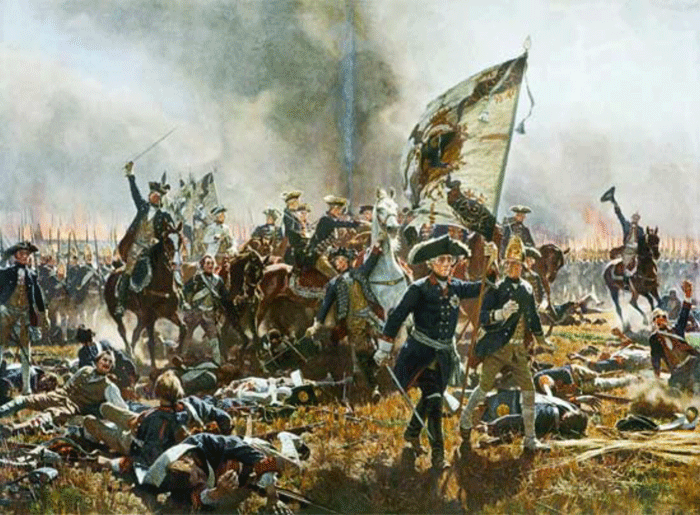
Actions by concentrated forces have always been combined with skillful maneuvers in the theater of operations and on the battlefield. Moreover, before the army moved, usually a single mass. Rumyantsev, on the other hand, used the method of troop movement by separate groups, which during the maneuver were concentrated for a joint strike on the enemy. Each of them had its own task, but all together - a single goal: to attack and defeat the enemy army. Rumyantsev demanded that they always be ready "for mutual action to the aid of others." Here, undoubtedly, the beginnings of a new principle of military art are seen (“to go apart - fight together”), the beginning of application, which military historiography refers only to the second half of the XIX century.
This was most characteristic of the 1770 campaign of the year. At the end of May, the army of PA Rumyantsev was located in Hotin. The scouts found that the main forces of the Turks were preparing for the crossing to the north bank of the Danube in the Isacchi area to launch an offensive against our troops. In order to prevent the defeat of individual parts of his, Rumyantsev immediately ordered the advanced corps of Repnin, who occupied Moldova, to move north to the area of the Ryabaya Tomba tract. In the same place, towards the Turks, Pyotr Aleksandrovich advanced from Hotin and his main forces, who carried out a maneuver march in seven separate columns, ready at any moment to reorganize into battle order. The departure of the army to the meeting place with the enemy was carried out by movement from different directions. Despite the long distances (more than 200 km), greater consistency was achieved in the actions of individual corps in time and place, as well as the secrecy of their concentration. Equally skillfully maneuvered troops on the battlefield. The army of Rumyantsev was attacked by four separate divided groups (detachments), which delivered simultaneous strikes from the north, north-west and northeast, clearly interacting with each other (concentric attack). This tactical device was new for that time. Its application was a major step forward compared with the rules of outdated linear tactics.
After the victory, the army of Rumyantsev continued to advance towards the Danube also in four groups on both banks of the Prut: there were three strong vanguards (commanded by Potemkin, Bauer and Repnin), and behind them were the main forces. Having found a large concentration of Turkish troops on the Larga River, Rumyantsev again quickly concentrated his entire army in the area of the upcoming battle, leaving only a small detachment on the west bank of the Prut to cover bridges. He also acted against the main Turkish forces on the Cahul River. In these battles, as in the Ryaba Grave, his troops attacked in several groups, attacking the enemy from various directions and bypassing his flanks.
Realizing the great importance of the mobility of the army, Rumyantsev with the greatest perseverance and tirelessness engaged in training the troops entrusted to him. He often spent long marches, taught staff to quickly rebuild and masterfully master weapons. The training of the troops also included river crossings, training attacks, defense of fortified points, joint actions of the army and fleet etc.
Rumyantsev's outstanding victories were determined, first of all, by purposefulness of actions, when, in his words, “the commander ... has one main point in the subject and flows to it with all the aspiration, overcoming it, refutes all others that depend on him.”
Napoleon Bonaparte, who became famous for defeating the stronger Austrian army in parts in the Italian campaign 1796-1797, was only a follower of Rumyantsev and after nearly three decades repeated the idea expressed by the Russian commander about the determination of actions as one of the decisive conditions for his victories.
An integral part of the offensive strategy of Rumyantsev and a new word in the military art of that time was the pursuit of the enemy battle defeated on the field until it was completely defeated. After the defeat of the Turkish army on the river Kagul, he pursued the fleeing troops to the Danube. In order not to give them the opportunity to cross to the other side, the avant-gardes of Bauer and Repnin pursued in the direction of the Turkish crossings over the river at Isakchi and Ishmael. They intercepted Turkish carts, sank many enemy soldiers and officers at crossings, captured 1000 prisoners, 30 guns, huge stocks of material resources. As a result, the Russian army on the move took the fortress of Ishmael, Kiliya, and then all other Turkish fortified points on the lower Danube.
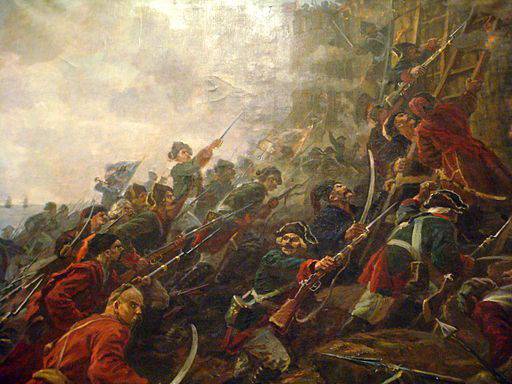
The undoubted advantages of the offensive strategy of P.A. Rumyantsev brilliantly proved on the battlefields. This confirms the fact that almost all victories were won by fewer troops and always with little blood. For example, in the battles of Larga and Kagul, the Russians lost 100 against 3000, respectively, the enemy’s people, and about 1500 against 20000, respectively, killed and captured.
One of the main prerequisites for successful leadership of P.A. Rumyantsev had a deep understanding of the national character and fighting qualities of the Russian soldier. In contrast to Western military doctrines, who considered the army a soulless machine, Rumyantsev, like his brilliant followers, Suvorov and Kutuzov, saw in the soldiers reliable defenders of the Fatherland, sincerely believed in their heroic strength, dedication and valor.
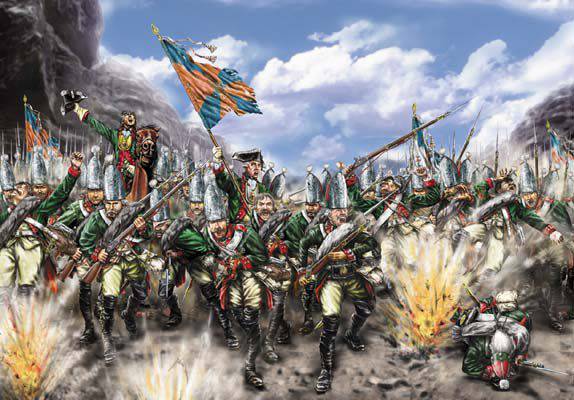
Designed by PA Rumyantsev's principles of resolute offensive strategy laid the foundation for a new stage in the development of the military art of the regular armies and had a great influence on the military art of the West. Finalized, developed further and widely introduced into the combat practice of the Russian troops A.V. Suvorov, and in Western Europe, Napoleon I, they became the pinnacle of military art for a whole century. Suvorov, who received a baptism of fire in the troops of Rumyantsev near Kolberg, and then, who was under his command in many military campaigns, highly appreciated the talent of his teacher. "He has no equal ..." he declared. “Suvorov is a pupil of Rumyantsev.” Despite the radical changes in the character of modern wars and the forms of warfare, the considered principles of an offensive strategy have not lost their significance even today.
Sources:
Lobov V. Military trick. M .: Moscow Military Historical Society; Logos, 2001. C. 68-72.
Buganov V.I., Buganov A.V. Commanders of the 18th century. M .: Patriot, 1992. C. 299-338
Zolotarev V. A. Apostles of the Russian Army. M .: Voentekhizdat, 1993. C. 292-299, 340-367
Ivanov V.P.A. Rumyantsev - the founder of an offensive strategy. // Military History Journal. 1980. No.11. C. 77-81.
Klokman Y. Field Marshal Rumyantsev during the Russian-Turkish war 1768-1774. Reprint. reproduction ed. 1951. M .: Science, 1991. C. 62-81.
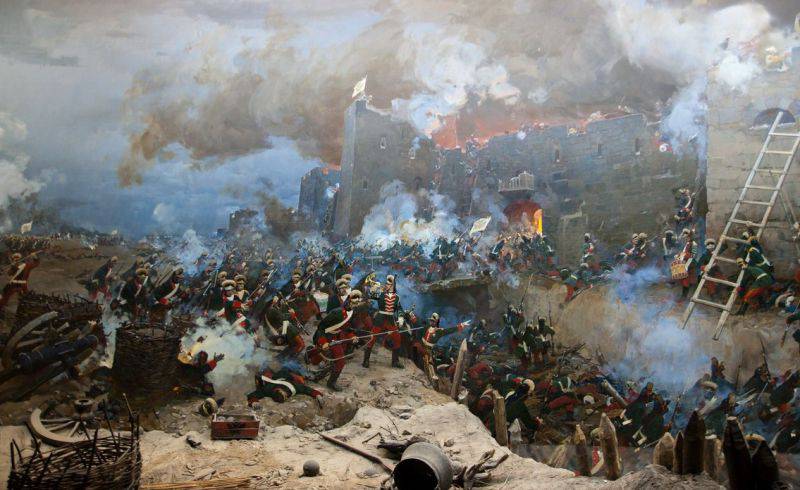
Information